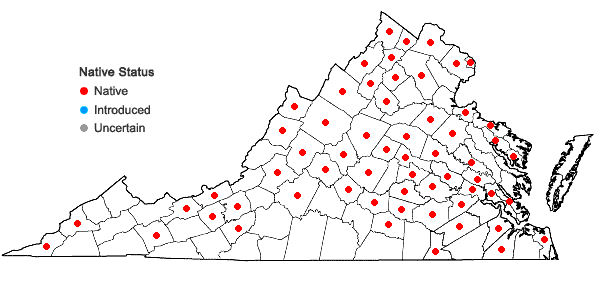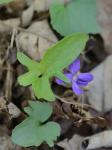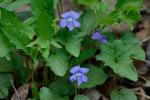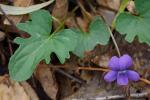Viola palmata L. var. triloba (Schwein.) Gingins ex A. DC.

Detail
- Family
- Violaceae
- Botanical Name
- Viola palmata L. var. triloba (Schwein.) Gingins ex A. DC.
- Common Name
- Northern Three-lobed Violet
- Synonym(s)
- Viola triloba Schwein.; Viola palmata L. var. palmata (misapplied)
- Flora of Virginia Name/Status
- Viola palmata L., s.l.
- Comments
- The concept and name follow the treatment of violets Flora of the Southeastern U.S. (FSUS) and the treatment of northeastern US violets by Ballard, Kartesz, and Nishino (Journal of the Torrey Botanical Society, 150(1): 3-266, 2023. This var. has traditionally been referred to as Viola palmata var. palmata; however, according to FSUS, the type of V. palmata unambiguously refers V. palmata sensu stricto to the common Southeastern Piedmont and Coastal Plain plant with deeply dissected leaf blades, traditionally referred to as V. palmata var. dilatata Elliott. The latter is thus rendered a synonym of var. palmata, and the widespread northern taxon previously treated as var. palmata must use the earliest available name, var. triloba. Following the FSUS treatment, var. triloba is the more northern element of the V. palmata complex and is distinguished by consistently having larger leaf blades shallowly to moderately divided into 3 to 5 lobes, with the terminal lobe typically broad and elliptical to ovate or triangular. Despite extensive variation in leaf lobing, this var. is more or less distinctive and is fairly common in the Virginia mountains and Piedmont, extending less frequently into the Coastal Plain.
Recent examination of thousands of herbarium specimens by Harvey Ballard has confirmed that this taxon is by far the most common var. of V. palmata in Virginia. According to FSUS, “var. palmata and var. triloba have not been found growing in intimate local contact, and their ranges are nearly allopatric when putative hybrids of var. palmata with Viola sororia are removed from consideration.” In Virginia, the two do overlap in the inner Coastal Plain but var. palmata appears to be absent from the Piedmont and mountains, where var. triloba probably occurs in most counties. A large number of specimens previously identified as V. palmata var. palmata have been annotated to V. stoneana, V. subsinuata, V. monoconora, and other lobed-leaf species by Ballard. See also Comments under the provisional maps for V. palmata var. palmata and V. stoneana.
- Habitat
- In a wide range of mesic to fairly dry upland forests; probably most numerous in moderately to strongly base-rich soils. Frequent to common in the mountains (at lower elevations) and Piedmont; less so in the Coastal Plain.
- Native Status
- Native
To save this map, right-click (control-click for Mac users) on the map and choose "Save Image As...".


